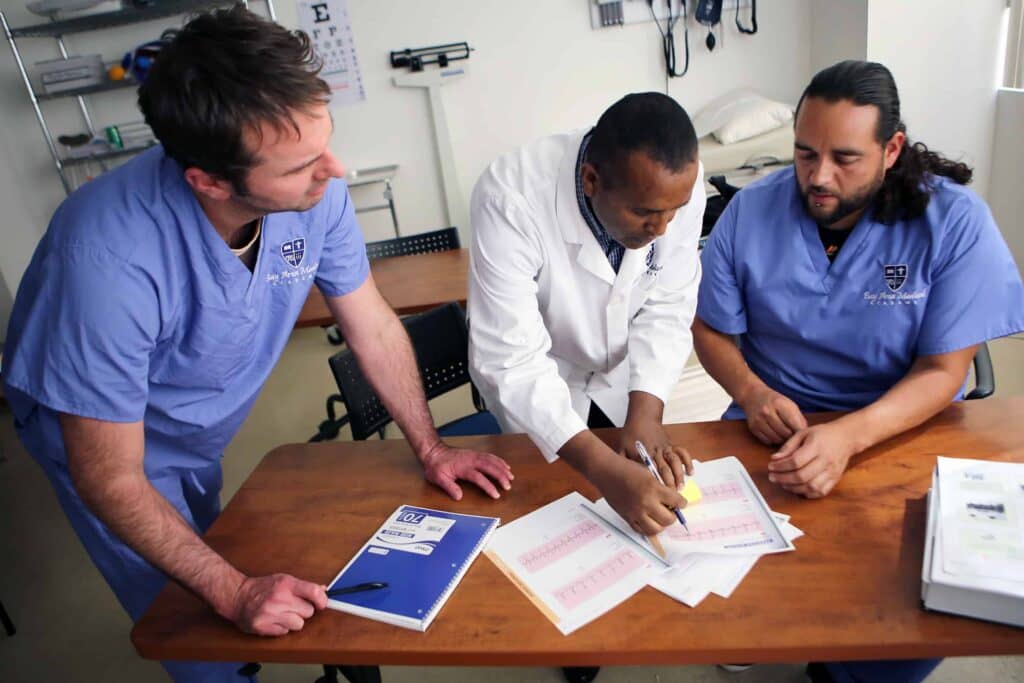Class Calendar | Call admissions on 415-943-2028
Find Phlebotomy Technician and EKG Technician training at BAMA Institute
Free MA Class For San Francisco Residents - CLICK HERE
Class Calendar | Call admissions on 415-943-2028

While not mandated by the state, most healthcare employers prefer certification if you want to become a medical assistant (MA) in California. When MAs are certified, employers know they have the knowledge and skills to provide the best patient support. By exploring how to become a medical assistant in California, you can take the first step toward a brighter future.
.
Becoming a medical assistant in California is a great way to quickly embark on a rewarding and highly sought-after career in the healthcare field. With the need for medical assistants at an all-time high, medical assistant training at Bay Area Medical Academy can open up the door to exciting new opportunities in as little as nine months.
The process for interviewing and enrollment will be unique for each program, but many involve the following key components:
Once you complete the above and are admitted to your program, you will be ready to move into the classroom.
Most medical assistant training programs divide their education and training into three subcategories — clinical, general, and administrative
When you have finished your formal training, you will be prepared to take your certification exams and go on an externship.
Now, steps three and four don’t necessarily go in this order when it comes to the National Certified Medical Assistant exam. While some students elect to take the exam before their medical assisting externship, it’s not required. In fact, some students find that it’s easier to pass the exam after they’ve gained practical experience from their externship.
Your clinical externship is an opportunity to work with an industry partner and gain real-world experience in a healthcare setting. You’ll work in a hospital, laboratory, or medical office, helping physicians, guiding patients through procedures, and performing venipunctures or skin punctures. Over the typically 200-hour placement, you will gain confidence and connections that will prepare you for the future.
After you finish your training and externship, you will be ready for graduation and job searching. This is an excellent time to make sure you have any additional certifications you might need for the most hiring flexibility and to secure the best pay in your new position. Some medical assistants seek additional certifications to allow them to work as EKG technicians or perform phlebotomy duties in their new roles as professional medical assistants.
BAMA’s 3-in-1 Medical Assisting with Phlebotomy Program includes three valuable medical certifications that will put you in high demand with California healthcare employers:
While many schools offer the above five steps for how to become a medical assistant in California, not all have the dedication to help you find a healthcare job that’s the right fit for you.
While we can’t guarantee employment, our Career Services are available to all graduates and provide lifetime job search support. We can also help you find the right employment opportunities to put your new skills to use. We provide job referrals and leads, interview workshops, resume writing assistance, and even employer on-campus days for meeting potential employers face to face.
If you’re looking to start your career as a medical assistant, BAMA is here to guide you every step of the way. By the end of our training program, you’ll be a confident medical assistant with the skills to make you an asset to any healthcare facility.
BAMA provides the best path for how to become a medical assistant in California. To learn more about our programs and enrollment process, contact us.
"*" indicates required fields
Our career-oriented program gives you hands-on, real-world training and ongoing support for your long-term goals.
For more information on BAMA's medical assisting and phlebotomy degree programs, contact us today!
BAMA: The Bay Area's best career-oriented healthcare traning
© 2024 Bay Area Medical Academy. All Rights Reserved. Website by WindsAndWater